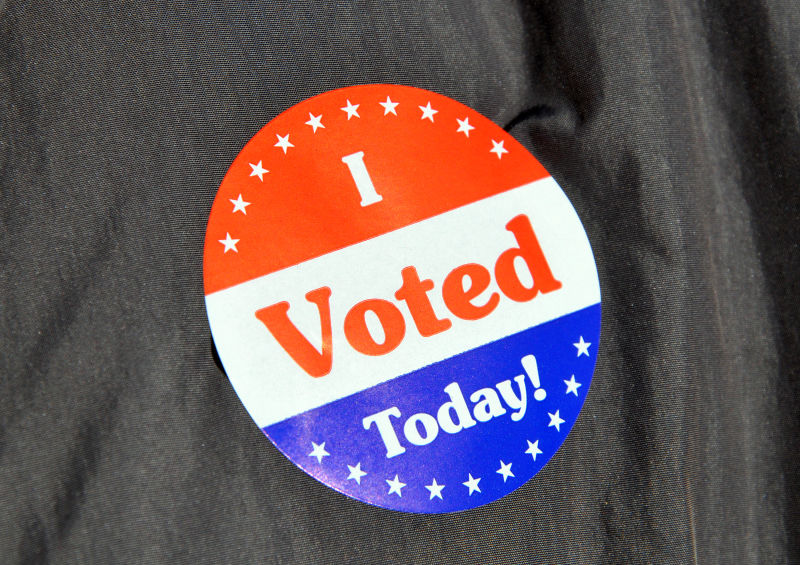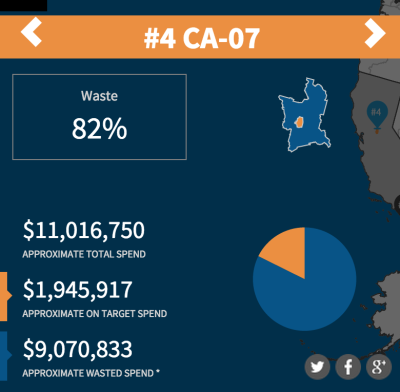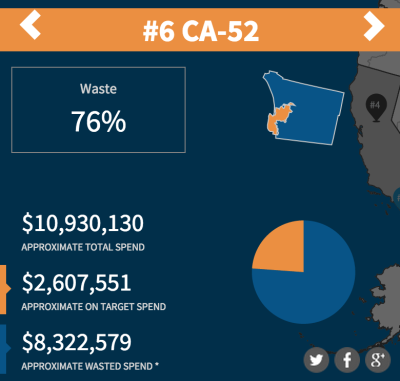The modern history of political campaigns really begins with the advent of the 30-second television ad and its ability to blast out messages to a wide audience. But a new report suggests it's missing the mark, and flags two 2014 California contests as among the worst when it comes to wasting cash.
The premise of "50 States of Waste," a report from a partnership of Google and digital tech company Targeted Victory, is simple: What happens when viewers in one of the nation's 2010 television markets get bombarded with campaign ads for a race in which they can't vote? Their answer: It's wasted political cash.
Congressional districts, drawn in California by an independent commission and in other states by legislators, rarely align nicely with the broadcast footprint of television stations. And it presents candidates and their supporters with a quandary: How do you get the eyeballs we need for those 30-second ads?
The answer, say the analysts behind the report, is to overspend. In fact, their report concludes that a whopping 75 percent of the money spent on the typical congressional campaign in the U.S. is wasted by reaching out to voters who don't even live in the district.
"You'd never buy a tool that only works 25 percent of the time," said Targeted Victory's Michael Beach in a news release. "The waste in the average broadcast television buy should make any campaign think long and hard about how and where to apply their media budget."



